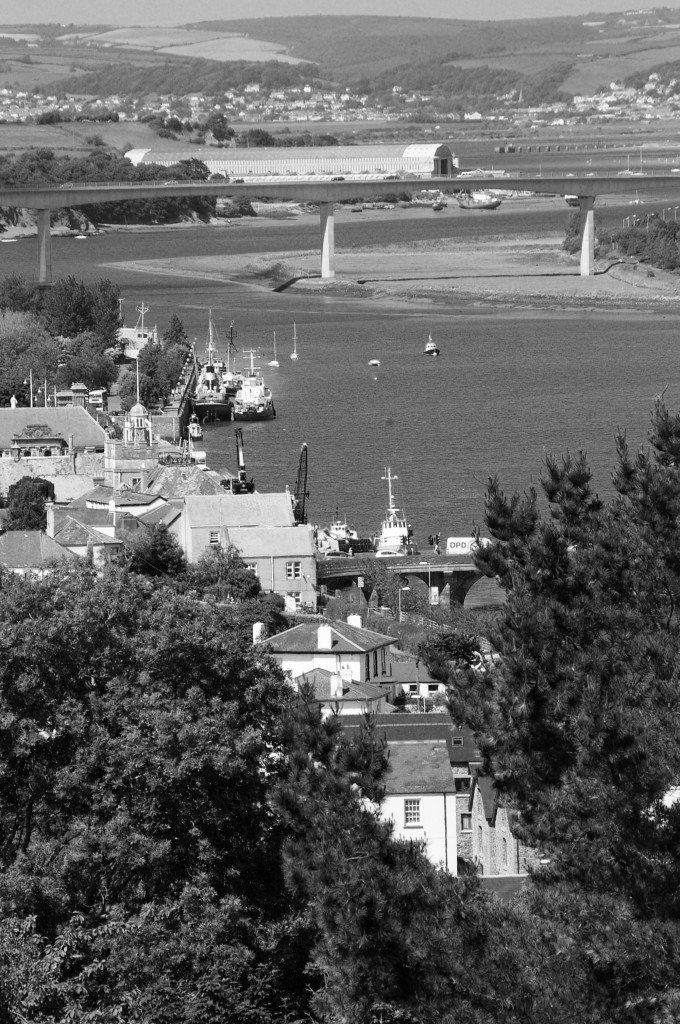I’m not talking about sandy beaches or rock pools, but the saltmarshes above the Iron Bridge and beside the river Yeo.
Here, an hour or so after the tide approaches the top of Westward Ho! beach, salt water is sweeping up the river and flowing the wrong way along the guts and pills that drain the water out of the marshes where the scurveygrass, orache and glasswort grow in abundance. The tide has already crept up the steep mud banks, or glidders as Henry Williamson called them, and overspilled the “Pool of the Six Herons” where these days three or four is a good count.
Now the small crabs, hiding in their holes in the banks of the guts, sense the approach of the salt water laden with the debris that contains the delicacies of their diet, and they creep out on to the mud and scurry down to the water’s edge to start feasting as it rises further towards the grass and sea asters growing on the flat marshland.  (Photo © Graham Hobbs)
(Photo © Graham Hobbs)
If it’s a spring tide, which occurs a day or two after full and new moon every month, the salt water rises over the grass of the marshes and floats away much of the dead leaves, sticks and litter that was left behind by the lesser tides of the preceding weeks. It’s quite a puzzle how all the wildlife living in the grass survives this inundation, but I think the answer lies in the fact that the high tide only lasts an hour or two and innumerable pockets of air are trapped under the grass roots for long enough for most of the little shrews, voles and invertebrates to survive.
There are numerous ant hills among the higher marshes and these seem to thrive despite the flooding while the little black wolf spiders that run around all over the grass when the sun is out can often be seen skating around on the surface of the water, being so light they don’t even get their feet wet. These spiders can easily be distinguished from true water skaters that live on ponds because while the latter have stiff hairs on their feet enabling them to race around on the water at high speed, the spiders can be seen running like mad and getting nowhere because their feet just slide on the smooth water surface.
It is noticeable that there are no mole runs in the saltmashes, and when rabbits foolishly burrow in the banks they can often be seen swimming for the shore when caught out by a spring tide. I’ve seen crows waiting on the bank and picking off baby rabbits that arrive too exhausted to run for safety and on one occasion, when collecting firewood by boat, I rescued a bank vole who was drifting down river on a log.
Eventually the tide subsides and water flows outwards down the guts again as the saltmarshes drain off. The spiders grab hold of plant tops as they emerge from the water, to avoid being washed away, and no doubt the ants in their hills give a communal sigh of relief as water ceases to seep into their underground chambers and they can carry their precious pupae, that we call ants’ eggs, back up near the surface to be warmed by the sun.
Meanwhile I have a boatload of driftwood logs to unload and saw up for next year’s fires.
Chris Hassall 13/05/2011
|
In St Mary’s Church, Bideford We are starting an all age communion service every second Sunday of the month and the first one is on Sunday 12 JUNE at 10 am to celebrate Pentecost. worship for families and people of all ages – including drama, worship songs, and activities for the children. Everyone welcome – Do come and join us! |
